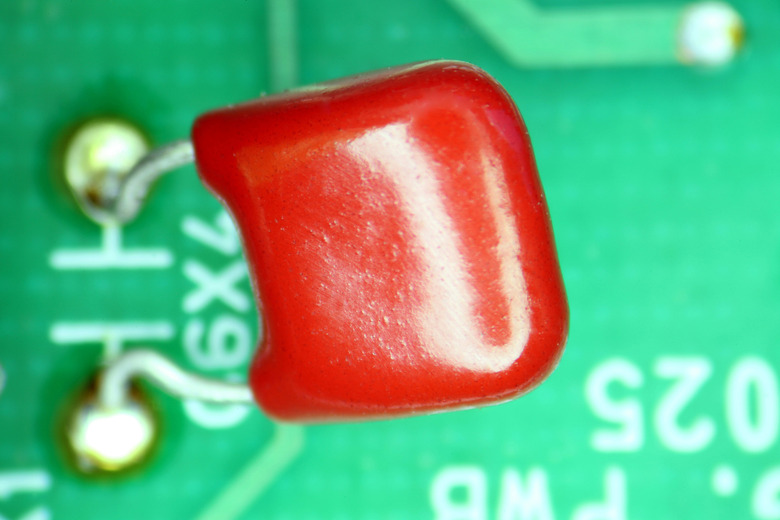How To Read K5M Capacitor Values
Capacitors act as temporary batteries. They store an electric charge, but are incapable of creating one of their own. A capacitor's storage capability is measured in farads and is called capacitance. One farad is a very large charge and few capacitors have that capacity. Most capacitors are measured in microfarads or in picofarads. The markings on a capacitor indicate the charge it can hold and the tolerance of the rated capacity. K5M capacitors are made of ceramic, mylar or mica materials and their values range from as little as 1 picofarad to .47 microfarads.
Step 1
Read the first two digits of the numeric code. The first two digits are the significant digits. For example: A capacitor is marked with 224M. The first two digits of the value are 22.
Step 2
Add the number of zeros indicated by the third numeric digit to the first two digits. The result is in picofarads. For example: The markings on a K5M capacitor read 224. Place four zeros after the 22 to obtain 220,000 picofarads: 220,000 picofarads = 0.22 microfarads.
Step 3
Compare the letter code on the capacitor to the code in the capacitor tolerance table. The values given in the table indicate a possible range of values for the capacitor. For example: The capacitor marking is 224M. The capacitor has a rated value of 220,000 picofarads with a range of plus or minus 20 percent, or a range of 176,000 to 264,000 picofarads.
Step 4
Look for a third code mark, usually two letters listed below the first line. The code mark indicates the dielectric material separating the two plates inside the capacitor.
TL;DR (Too Long; Didn't Read)
Capacitors with a value lower than 100 picofarads have the actual capacitance value stamped on them. A 22-picofarad capacitor stamp reads 22pF followed by the tolerance code.
The capacitor may have color markings to indicate a temperature coefficient.
References
- "Introductory Circuit Analysis"; Robert L. Boylestad; 1981
Cite This Article
MLA
Logan, Michael. "How To Read K5M Capacitor Values" sciencing.com, https://www.sciencing.com/read-k5m-capacitor-values-10073989/. 24 April 2017.
APA
Logan, Michael. (2017, April 24). How To Read K5M Capacitor Values. sciencing.com. Retrieved from https://www.sciencing.com/read-k5m-capacitor-values-10073989/
Chicago
Logan, Michael. How To Read K5M Capacitor Values last modified March 24, 2022. https://www.sciencing.com/read-k5m-capacitor-values-10073989/
